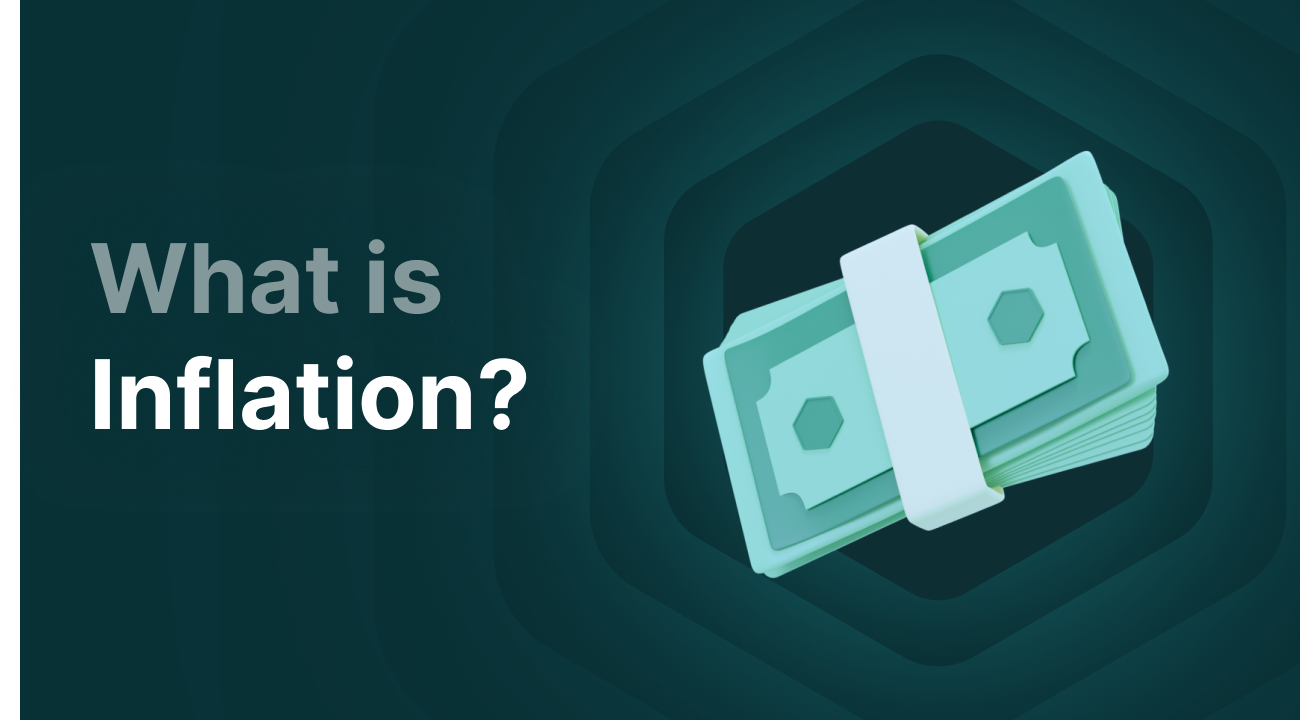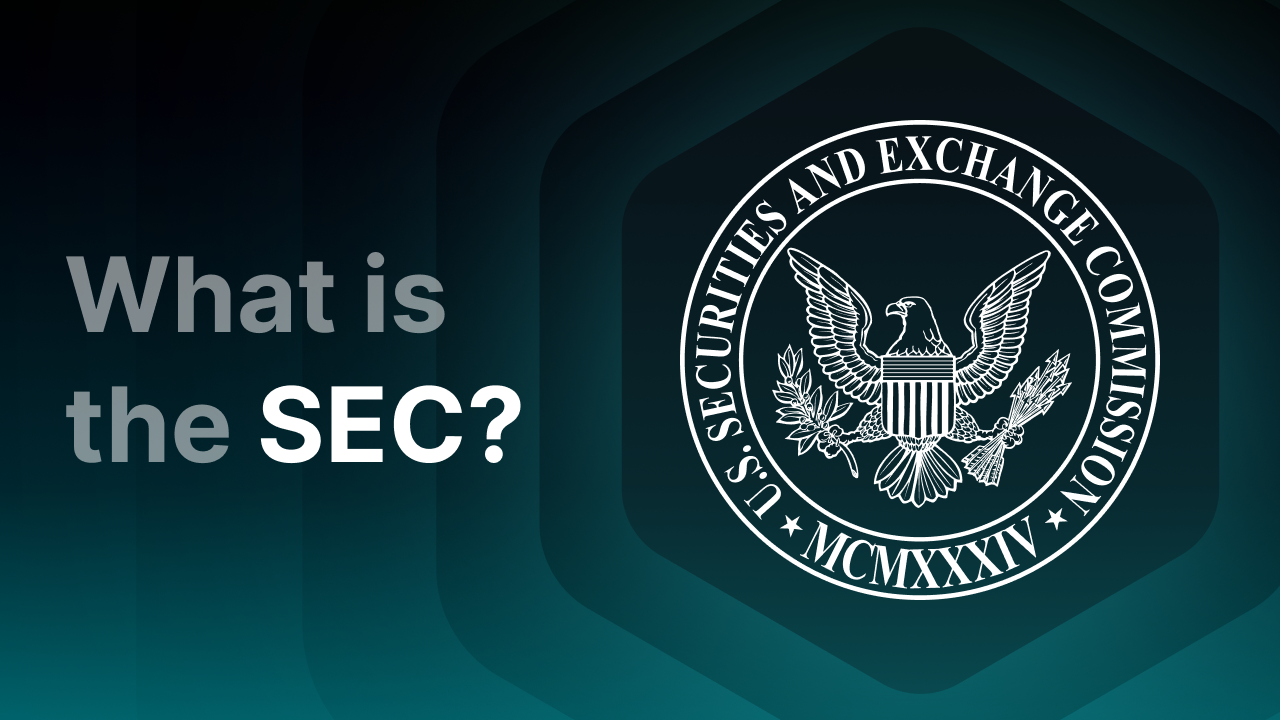What is inflation?

Inflation meaning
Inflation is an economic phenomenon where the value of money decreases. This means that with the same amount of money, you can buy less than before. This is also called a decline in purchasing power. If the prices of products and services rise while your income remains the same, then you can spend less. Inflation is usually expressed as an annual percentage. An annual inflation of 3% means that the prices of products or services are on average 3% higher than the year before.
Inflation is often seen as something negative, but central banks, such as the European Central Bank (ECB), often aim for mild inflation. A mild inflation (just below 2%) ensures stable price development, which encourages consumers to keep spending money and prevents economic stagnation. Too high or too low inflation can actually be harmful to the economy.
Key Takeaways
-
Inflation means a decline in purchasing power due to a general increase in the prices of products and services.
-
Average inflation is calculated via the consumer price index (CPI), which measures the price development of a basket of goods and services.
-
Inflation can arise from rising production costs, wage increases, higher taxes, import inflation, and increased demand for products.
-
When inflation is higher than desired, it can lead to uncertainty in the economy and a decline in purchasing power.
-
Monetary inflation arises from increasing the money supply via central banks, which reduces value in the long term.
-
Inflation higher than the return on savings means savers lose purchasing power, while some investments may offer protection.
-
Cryptocurrencies can combat inflation with fixed supplies, burn mechanisms, stablecoins, and decentralized governance.
How is inflation calculated?
Inflation is calculated by looking at the development of prices in a wide range of products and services. This is called the consumer price index (CPI), where the prices of a ‘basket’ of goods and services that households consume are compared. This basket includes, for example, daily groceries, clothing, energy, insurance, subscriptions, and rent. The average price of the basket is compared with that of the same month in the previous year, and the price change determines inflation: if the average price has risen by 3%, then inflation over that period is 3%.
When calculating inflation, temporary price fluctuations are also taken into account. For example, energy prices can be volatile and may give a distorted picture. That’s why core inflation is also considered, which is inflation excluding highly fluctuating components such as energy and food.
In Europe, the “harmonized index of consumer prices” (HICP) is used to make international comparisons. This index measures inflation figures in various European countries in a similar way to the CBS. This allows the European Central Bank to implement better policies across the entire eurozone.
What causes inflation?
Inflation can be caused by various factors, usually changes in economic conditions. It does not necessarily result from a single factor, but is often an accumulation of events. In addition, external events such as wars or a pandemic can accelerate inflation. We’ve listed the most important causes:
-
Rising production costs
If companies have to pay more for raw materials, energy, or transport, they need to pass on these extra costs to the consumer. This will cause prices to rise. -
Wage increases
If the wages of employees in a company increase, the labor costs for businesses also rise. Again, companies may pass these extra costs on to the consumer, and sales prices can rise. -
Higher taxes or excise duties
The government in a country may decide to raise VAT or excise duties on products such as fuel or alcohol, which will increase store prices. -
Import inflation
Imported products can become more expensive, for example due to a weaker euro or political tensions worldwide. If the value of the euro falls relative to other currencies, it costs more to purchase goods on the international market. Think of rising prices for oil, electronics, or clothing from non-EU countries. A good example is the import tariffs introduced by the United States in 2025. -
Increased demand for products
When the economy is doing well and people start spending more, companies can raise prices. This is also called demand inflation.
What are the consequences of inflation?
Everyone is affected by inflation, especially because it influences the purchasing power of consumers. But the consequences of inflation vary per situation:
-
For consumers
In daily life, inflation is most noticeable because groceries become more expensive, energy bills rise, and vacations cost more. This effect is strongest when wages do not rise at the same pace, causing people’s purchasing power to decline. -
For savers
With high inflation, people can slowly lose value on the money in their savings account. For example, if you earn 1% interest on your savings but inflation is 4%, you gain little. Your wealth may grow by 1%, but your purchasing power ultimately falls. -
For entrepreneurs
If business costs rise, it can be difficult to pass this on to customers, especially if customers are price-sensitive. Profit margins are then under pressure. On the other hand, inflation can also be favorable for companies when the value of their products increases. -
For the economy
While mild inflation is positive for the economy, too high inflation can lead to uncertainty, reduced investment, and possibly even a recession. Central banks try to prevent this by, for example, raising interest rates.
Monetary inflation
So far, we’ve mainly covered price inflation, but there is also monetary inflation. This is the phenomenon where monetary policy (determined by central banks like the ECB or the Federal Reserve) massively introduces new money into circulation. This can in some cases lead to currency devaluation.
Monetary inflation is usually not directly felt by the consumer, for example not in the supermarket, but it has long-term effects on savers and investors. If there is no economic growth, but the money supply continues to grow, then money will gradually lose value.
Take, for example, the policy after the 2008 financial crisis or the COVID-19 pandemic in 2020. Central banks bought government bonds and interest rates were lowered to stimulate the economy. While this may have been necessary in the short term, in the long term it led to strong inflation because trust in the currency declined.
What is the impact of inflation on investments?
The impact of inflation is not immediately visible on your investments, but it can subtly affect your returns.
Example:
Annually, you achieve a return of 5%, but inflation that year is 3%. Then you effectively only have a 2% return that year. Inflation has reduced the value of your profit.
As an investor, there are different ways to protect your assets from inflation. You can invest in assets that are considered relatively inflation-resistant, such as commodities, precious metals, or certain stocks. Also, cryptocurrencies are increasingly seen as a way to protect against inflation. Although cryptocurrencies are seen as volatile, some cryptocurrencies have deflationary properties that counter inflation.
How is inflation countered in crypto?
Cryptocurrencies counter inflation because most coins have a predetermined or controlled issuance of new coins, making them less susceptible to monetary inflation. In the white paper of Bitcoin, published in 2008 by Satoshi Nakamoto, the financial crisis was mentioned and the idea of a digital currency that combats inflation was introduced. These are various examples of how inflation is countered in crypto:
-
Maximum supply
Some cryptocurrencies have a maximum supply, making the coin scarce. Bitcoin, for example, has a fixed maximum of 21 million coins, and due to Bitcoin halving every 4 years, fewer BTC are issued. -
Burn mechanisms
Some blockchains use burn mechanisms that destroy tokens. For example, since the switch to Proof of Stake, Ethereum partially destroys transaction fees, which can reduce the supply of ETH tokens. -
Stablecoins
Stablecoins such as USDC or EURC are pegged to fiat money. In times of high price volatility, stablecoins can be used as a safe haven because they provide stability. -
Decentralized control
Most crypto projects are not managed by a central party, but have policies encoded in transparent code. This means there is no central authority like a government or bank that can suddenly issue more money.
Still, inflation can occur in the crypto world, especially with projects without a maximum supply or with a high issuance rate. Always be aware of the risks and do thorough research on the projects you want to invest in.
Final thoughts
Inflation is a complex but unavoidable economic phenomenon that affects almost everyone. Moderate inflation stimulates economic growth, but excessive inflation can have harmful consequences. It is therefore important to understand inflation well. Cryptocurrencies offer interesting properties to counter inflation, but also come with their own risks.




